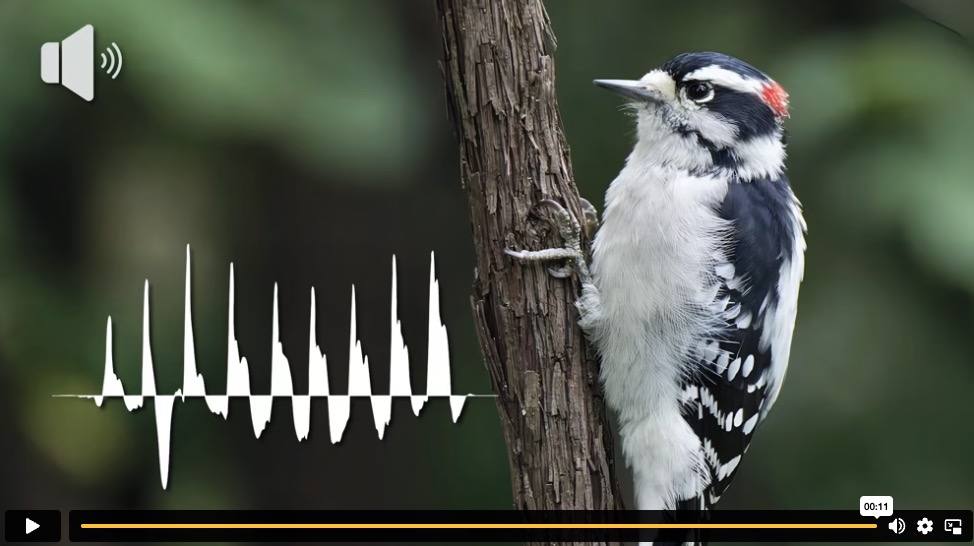 PROVIDENCE, R.I. — It’s one of nature’s mysteries: How can woodpeckers, the smallest of which weigh less than an ounce, drill permanent holes into massive trees using only their tiny heads? New research shows that there’s much more at play, anatomically: When a woodpecker bores into wood, it uses not only its head but its entire body, as well as its breathing. In a study published in the Journal of Experimental Biology, a team led by biologists at Brown University reveals how woodpeckers combine breathing and whole-body coordination to drill into trees with extraordinary force. “These findings expand our understanding of the links between respiration, muscle physiology and behavior to perform extreme motor feats and meet ecological challenges,” said lead author Nicholas Antonson… The team studied downy woodpeckers, the smallest species of woodpeckers in North America, which populate forested areas throughout the United States and Canada.
PROVIDENCE, R.I. — It’s one of nature’s mysteries: How can woodpeckers, the smallest of which weigh less than an ounce, drill permanent holes into massive trees using only their tiny heads? New research shows that there’s much more at play, anatomically: When a woodpecker bores into wood, it uses not only its head but its entire body, as well as its breathing. In a study published in the Journal of Experimental Biology, a team led by biologists at Brown University reveals how woodpeckers combine breathing and whole-body coordination to drill into trees with extraordinary force. “These findings expand our understanding of the links between respiration, muscle physiology and behavior to perform extreme motor feats and meet ecological challenges,” said lead author Nicholas Antonson… The team studied downy woodpeckers, the smallest species of woodpeckers in North America, which populate forested areas throughout the United States and Canada.